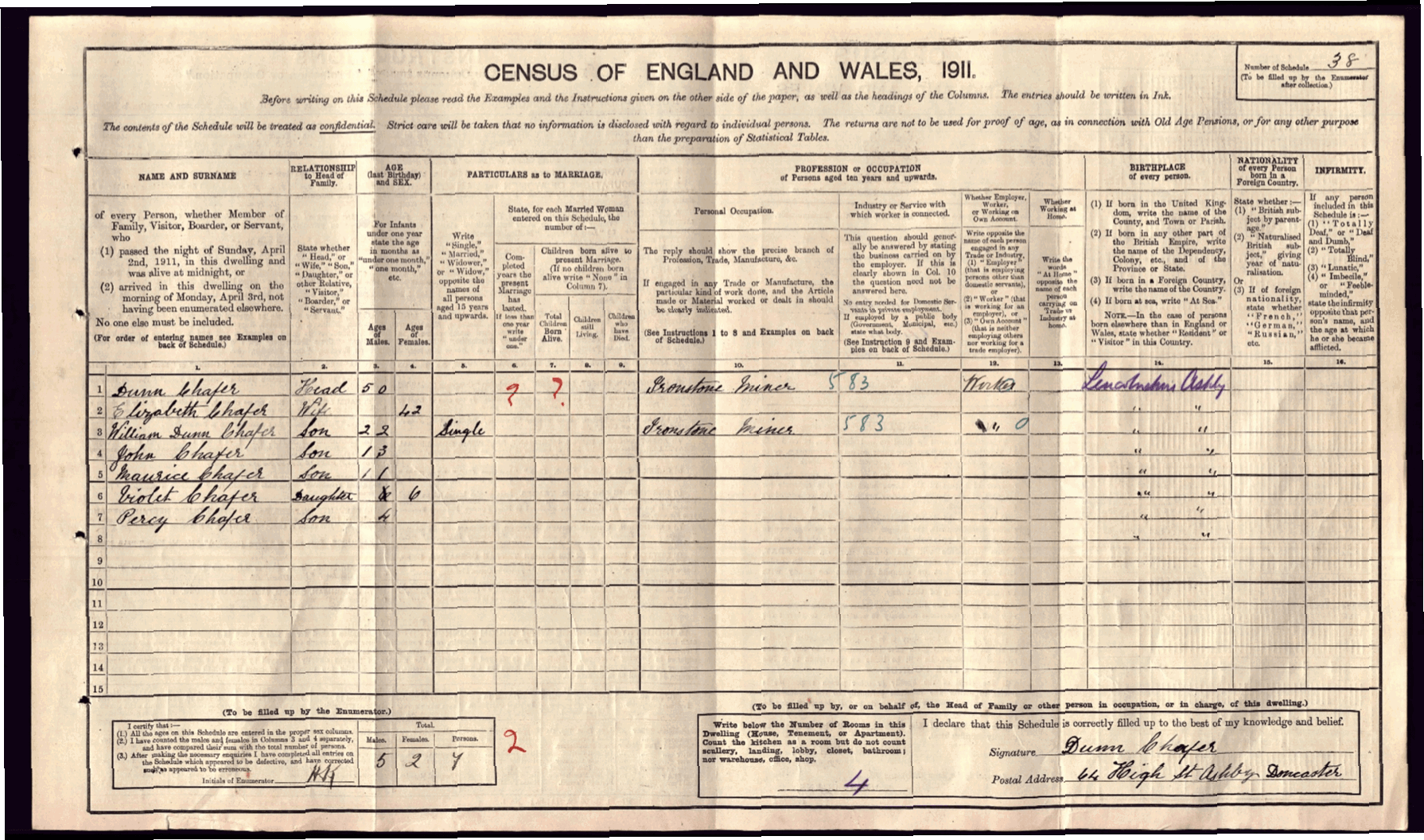John Chafer

FAMILY LIFE
John Arthur Chafer, born in 1898, was the fourth child of Dunn and his wife Elizabeth. They were both born in Ashby and were married on the 30th April 1888. Dunn was 10 years older than Elizabeth.
Dunn’s parents had moved to Ashby from Osgodby and South Kelsey whereas Elizabeth’s were from Beckingham and Gringley, just the other side of the Trent past Gainsborough.
The census returns reveal that they had been drawn to Ashby to seek work in the ironstone mines. By 1911 both Dunn and his eldest son were working as ironstone miners with the family still living on Ashby High Street.
Dunn died in 1916 when John was just 18 years old.
We have not been able to discover any further details about the family and have to assume that they had some connection with Ashby Wesley either through church membership or attendance at the Sunday School.
We can see from the censuses of 1901 and 1911 that the family lived on he High Street.


MILITARY SERVICE
It is most likely that John was called up in 1916 as soon as he was old enough to be conscripted. He was assigned to the 1st Battalion of the Norfolk regiment and as far as we know spent the whole of his time in the army with them.
In August 1914 the Battalion was in Belfast but when war broke out they went straight to France. In 1917 the battalion moved with the 5th Division to Italy but in late March of 1918 they were recalled to France to counter the German Spring offensive.
The entry for the War Diary of the 1st Battalion on the 7th May 1918 (shown below) reads as follows :-

7: 5: 18 Our artillery was very active during the night; harassing and counter battery work was carried out.
Our incendiary shells fired several of the Bosche buildings.
The enemy artillery made some good shooting scoring some accurate fire on the right Company front line.
Enemy machine gun at K.26.C.6/6 was very active and its position was accurately wired by Centre Company. The Artillery Liaison Officer was in close touch at Hd. Qrs. By wiring at once he was able to bring 4’ 5” retaliation on this gun which at once silenced him.
Snipers remarkably quiet now owing to our retaliatory methods. During these nights our working parties progressed with wire defences, the enemy putting up a little wire and camouflage near the “Brickfields”. Our Officer patrol from Right company reconnoitred the “Flooded Area”. An empty sniper post was found near the canal.
This brief entry gives us, nonetheless, an insight into life in the trenches and the reality of the conflict.
The map reference indicates that the 1st Battalion Norfolk regiment was engaged in the fighting in the north, near to the Canal du Nord around the area of Aire sur la Lys which is close to St. Omer and not far from Calais.

Below are copies of John’s medal records and his list of personal effects.



John is buried at the Tannay British Cemetery at Thiennes.

